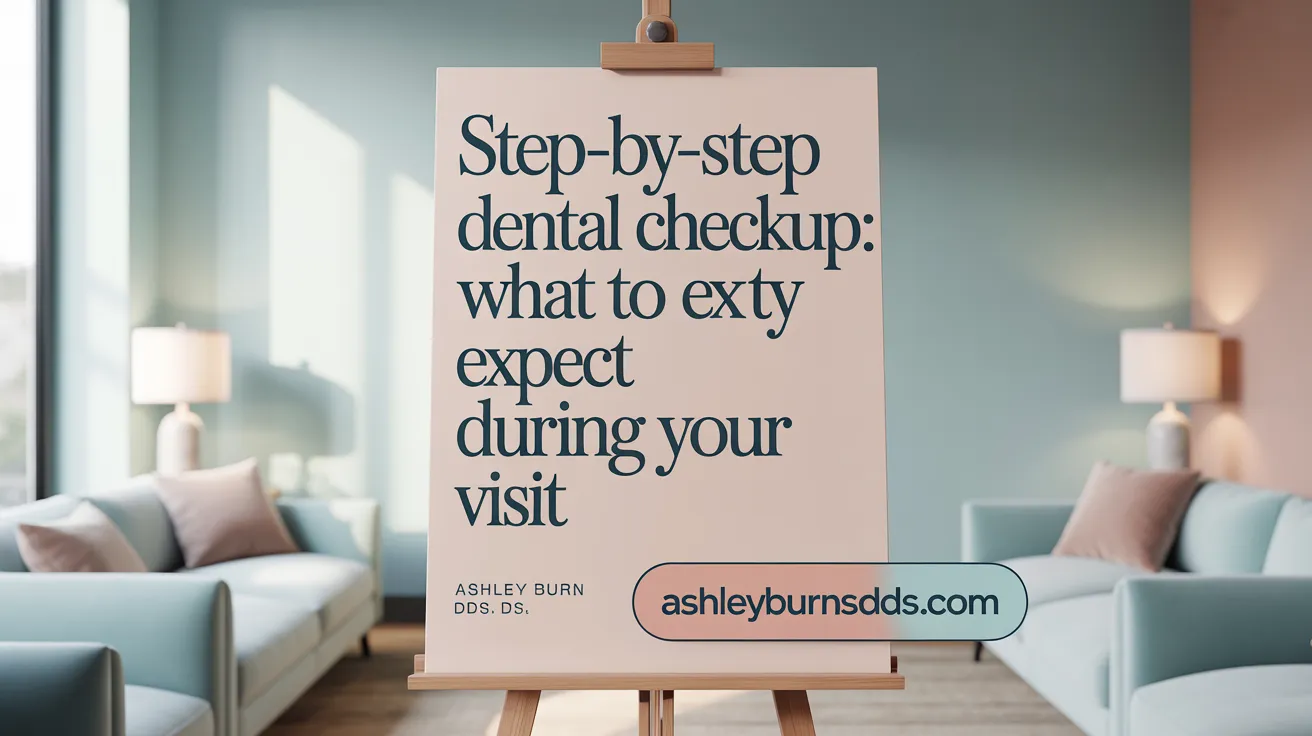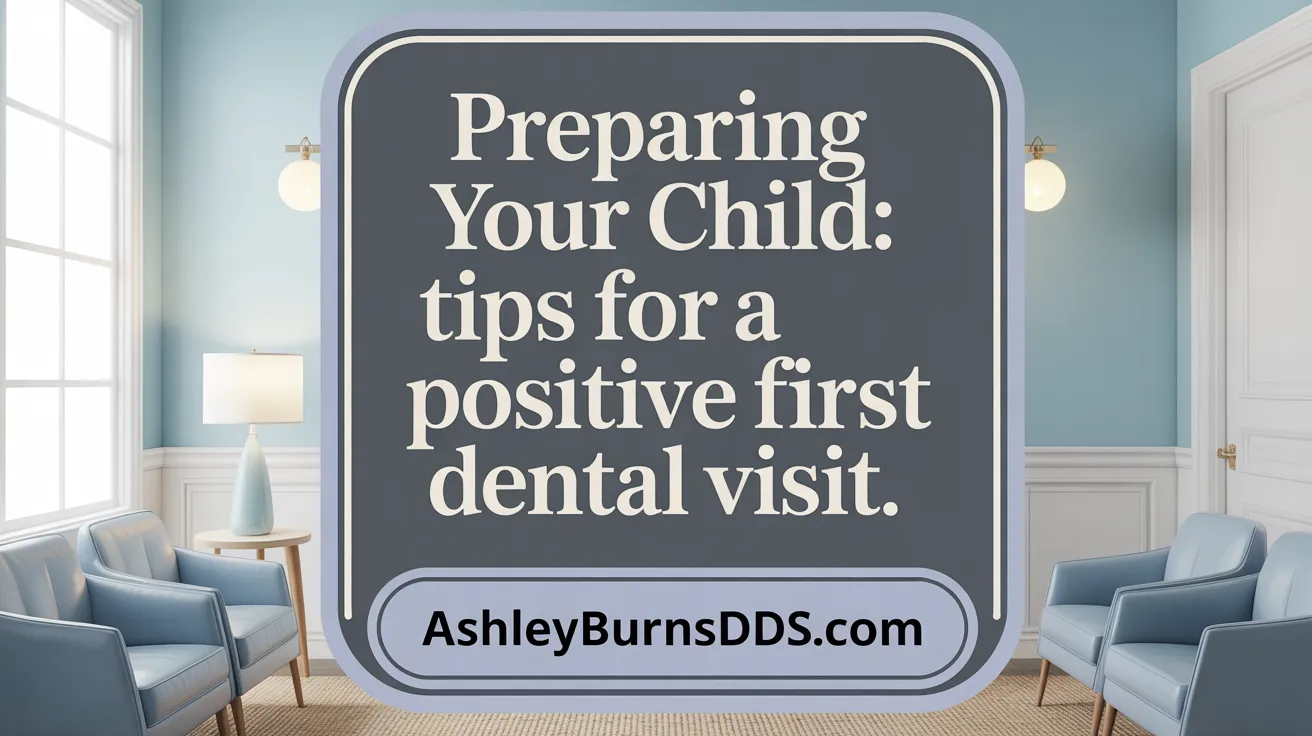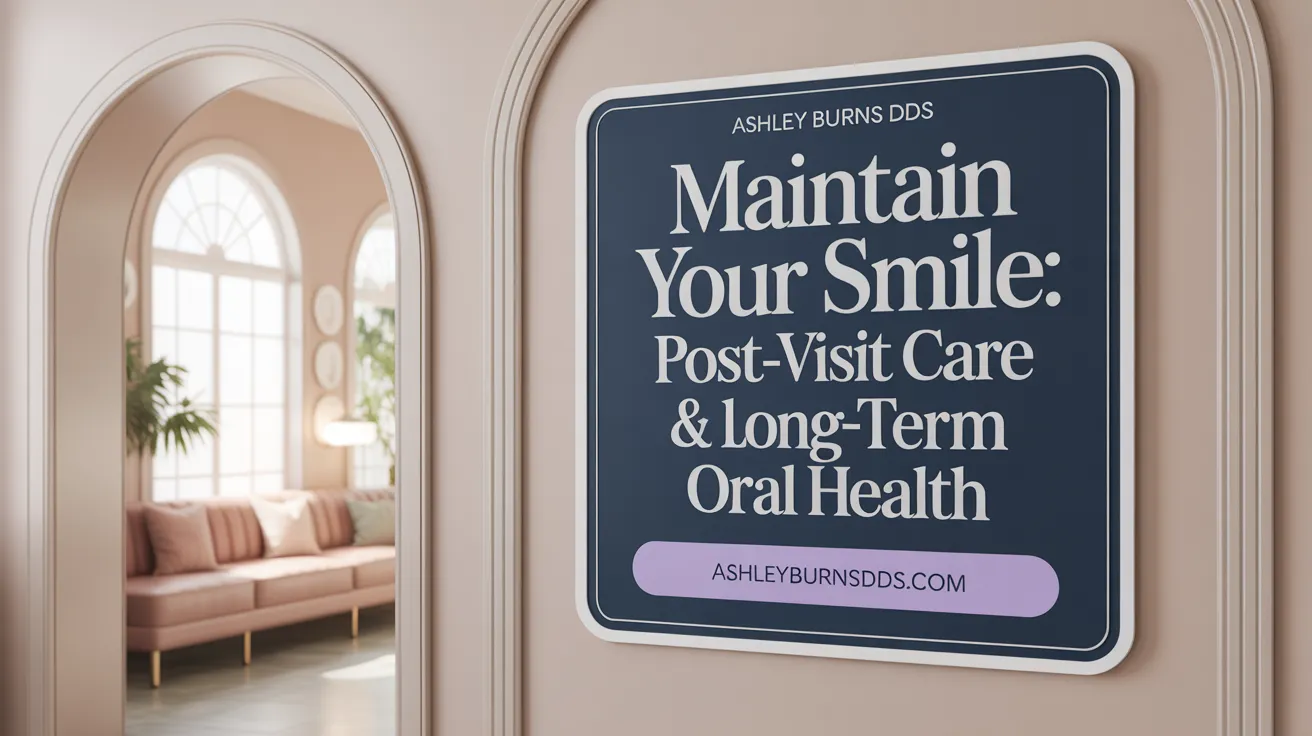Beginning Your Journey to a Healthy Smile
Your first dental visit sets the foundation for a lifetime of oral health. Whether you're visiting as a new patient or taking your child for their initial dental checkup, understanding what to expect can ease any anxiety and prepare you for a positive experience. This guide walks you through each step of the first appointment, ways to prepare, common procedures involved, and tips for managing the visit with confidence.
What Happens During Your First Dental Visit?

Check-in and paperwork procedures
Upon arriving at the dental office, patients typically start by checking in with a staff member or Patient Coordinator. This process involves verifying insurance details and completing necessary forms related to medical and dental history. Filling out these documents beforehand or arriving early can help streamline the process.
Review of medical and dental history
A dental team member will review your medical and dental histories to understand your health background, current concerns, and any previous dental treatments. This review helps tailor the dental care plan and addresses specific needs or risks.
Digital X-rays with low radiation exposure
Digital X-rays are commonly taken during the first visit. They provide detailed images of your teeth, jawbone, and surrounding structures, with significantly lower radiation levels than traditional X-rays. These images help detect issues like decay, impacted teeth, or bone problems.
Comprehensive oral examination including oral cancer screening
The dentist performs a thorough examination of your teeth, gums, bite, and oral tissues. An oral cancer screening is also conducted, which may involve visual inspection and specialized tools to identify any abnormal tissues or signs of disease.
Discussion of findings and development of personalized treatment plan
After the exam, the dentist discusses the results with you, explaining any issues found and outlining potential treatment options. A personalized treatment plan is created based on your oral health status and goals, whether it involves further cleanings, fillings, or other procedures.
Scheduling follow-up visits and payment discussions
Before concluding the visit, you will be encouraged to schedule follow-up appointments for routine cleanings, exams, or specific treatments. The staff will discuss payment options, including insurance coverage and financing if needed, to ensure you understand your care plan and costs.
How can new patients and children expect during their first dental visit?
During their first dental visit, new patients and children encounter a friendly and calming environment designed to reduce anxiety. The appointment generally lasts about an hour and includes a basic exam of teeth, gums, and oral tissues. For children, the visit helps introduce them to dental care in a gentle manner, often involving a gentle cleaning and educational tips. Parents should prepare their child by explaining the visit positively, practicing opening their mouth, and maintaining a relaxed attitude. The dentist will discuss proper oral hygiene, preventive measures, and future dental care, making early visits important for preventing cavities, ensuring healthy development, and fostering lifelong comfort with dental care.
Preparing for a Successful First Dental Visit
Preparing thoroughly before your first dental appointment can significantly enhance your experience and help ensure effective care. Patients should gather all relevant dental and medical histories, including a list of current medications, prior treatment records, and insurance information if applicable. Having these details on hand allows the dentist to better understand your oral health background and tailor their approach.
Completing paperwork in advance and arriving early at your scheduled appointment can reduce last-minute stress and help you start your visit calmly. Many dental practices now offer online forms, which can streamline this process.
Maintaining good oral hygiene before the visit is also recommended. Brushing and flossing your teeth not only make your mouth feel fresh but also help the dentist conduct a more accurate examination.
For children, early preparation involves explaining the upcoming dental visit in a positive, simple way—perhaps reading books or watching videos about going to the dentist. Practice opening their mouths and brushing their teeth together can build confidence. Ensuring your child is well-rested and has had minimal sugary snacks beforehand can also make the appointment more comfortable. See tips on preparing your child for their first dental visit.
Dressing comfortably and wearing loose, breathable clothing promote relaxation and ease during procedures. If you have dental anxiety or special needs, communicate these concerns with your staff beforehand so they can provide additional support.
Finally, prepare a list of questions or concerns to discuss during the appointment. Clear communication helps address fears, clarify treatment options, and ensures you receive comprehensive care tailored to your needs. With proper preparation, your first dental visit can be a positive step toward lifelong oral health.
Common Procedures and Step-by-Step Checkup Process
 During a typical initial dental appointment, several important procedures are performed to evaluate and establish your oral health status. The process begins with an initial review conducted by a hygienist or dental assistant, who gathers your medical and dental history. This helps the dental team understand your background and any specific concerns.
During a typical initial dental appointment, several important procedures are performed to evaluate and establish your oral health status. The process begins with an initial review conducted by a hygienist or dental assistant, who gathers your medical and dental history. This helps the dental team understand your background and any specific concerns.
Next, digital X-rays are taken. These images are crucial for revealing hidden issues such as cavities between teeth, bone loss, cysts, or tumors, which are not visible during a visual exam. Digital X-rays emit relatively low radiation and provide immediate results, aiding in a thorough assessment.
Following the X-rays, the dentist performs a comprehensive exam. This includes inspecting your teeth, gums, and oral tissues for signs of decay, gum disease, or other problems. The exam also involves checking your bite, jaw function, and oral cancer screening, which is recommended annually for early detection.
A professional cleaning is often part of this visit, which involves removing plaque and tartar buildup with specialized tools. The hygienist may also polish your teeth to remove surface stains and apply fluoride treatments to strengthen enamel.
After completing these assessments, the dentist reviews the findings with you. They discuss any issues identified and develop a personalized treatment plan tailored to your specific needs and goals.
Finally, future appointments are scheduled for routine cleanings, ongoing preventive care, or restorative treatments if required. The visit concludes with recommendations on maintaining your oral health, emphasizing the importance of regular checkups.
This systematic approach helps ensure your oral health is properly monitored and maintained, setting the foundation for a lifetime of healthy smiles.
Guidance for Parents: Preparing Children for Their First Dentist Visit
 The first dental visit for a young child should ideally occur within 6 months of the eruption of their first tooth, or by their first birthday. Early visits set the stage for a lifetime of good oral health and help children become familiar with dental care in a positive way.
The first dental visit for a young child should ideally occur within 6 months of the eruption of their first tooth, or by their first birthday. Early visits set the stage for a lifetime of good oral health and help children become familiar with dental care in a positive way.
Parents play a crucial role in preparing their children emotionally and practically. It’s helpful to explain what happens during the first dental visit using simple, positive words to reduce fear and build excitement. For example, describing the dentist as a friendly helper who will check their teeth and gums can make the experience less intimidating.
Visiting the dental office beforehand can also make a big difference. Arranging a tour or visiting during a less busy time helps children see the environment and become accustomed to the sights and sounds. Reading children’s books about visiting the dentist can further demystify the experience.
Role-playing at home—such as practicing opening their mouth or pretending to be the dentist—can boost confidence and cooperation. Bringing a favorite comfort item, like a stuffed toy or blanket, can provide additional reassurance during the appointment.
Maintaining good oral hygiene habits at home is important. Parents should clean their baby’s gums with a damp cloth before teeth come in and start brushing with a small toothbrush and a tiny amount of fluoride toothpaste once teeth appear. Limiting sugary foods and drinks also promotes healthier teeth and eases the dental visit.
During the appointment, a pediatric or family dentist will conduct a gentle dental examination and cleaning, focusing on teaching children about oral health in a playful and caring manner. Overall, preparation and a calm, encouraging approach help create a positive first dental experience that encourages ongoing dental care and good habits.
Creating a Positive Experience and Alleviating Anxiety

How can new patients make a positive first impression and manage their experience during their initial dental appointment?
New patients have the opportunity to set a positive tone for their ongoing relationship with their dental provider. Arriving on time helps start the visit smoothly, showing respect for the schedule. Reviewing the practice’s policies, amenities, and preparing questions in advance can make the process more comfortable. Engaging warmly with staff, using the patient’s name, and maintaining a friendly attitude help foster trust and relaxation.
During the appointment, a thorough examination with advanced technology, clear explanations of procedures, and personalized treatment plans contribute to a confident experience. Efficiently managed wait times and smooth scheduling of follow-up visits and payments leave lasting positive impressions. Creating a welcoming, professional, and patient-centered environment encourages loyalty, positive reviews, and future referrals.
How can dental professionals address patient concerns and alleviate anxiety related to the first dental visit?
Dentists and their team can play a vital role in making first-time patients feel safe and cared for. Establishing a calm, inviting environment with friendly staff and a comforting atmosphere sets the stage. Using communication techniques such as tell-show-do—explaining procedures, demonstrating instruments, and performing them slowly—helps demystify the visit.
Listening carefully to patient concerns and employing empathy reassures anxious individuals. Distraction methods like calming music, conversation, or guided imagery divert attention from fear. For patients with moderate to high anxiety, sedation options, including oral or nitrous oxide sedation, can be suitable choices. Non-pharmacological strategies like deep breathing exercises and positive reinforcement further reduce stress. Overall, openness, transparency about costs and procedures, and a gentle, patient-focused approach are essential for easing fears and building trust in new patients.
Post-Visit Care, Follow-Up, and Building Long-Term Oral Health
 After your initial dental exam, maintaining good oral hygiene is essential. Patients should adhere to personalized care advice given by their dentist, which may include specific oral hygiene techniques or recommendations for fluoride treatments. Consistent daily oral care supports the health of teeth and gums and prevents future issues.
After your initial dental exam, maintaining good oral hygiene is essential. Patients should adhere to personalized care advice given by their dentist, which may include specific oral hygiene techniques or recommendations for fluoride treatments. Consistent daily oral care supports the health of teeth and gums and prevents future issues.
Scheduling routine check-ups and professional cleanings every six months—or more frequently if advised—is vital for early detection of problems like cavities or gum disease. These visits help keep oral health on track and allow the dental team to monitor development, especially for children or patients with ongoing concerns.
It is important to recognize signs that may require immediate dental attention after a visit. Such signs include persistent pain, bleeding that does not stop, swelling, or signs of infection. Promptly contacting your dental office if these symptoms occur ensures timely treatment and helps avoid complications.
Maintaining open communication with your dental team is crucial. Share any ongoing concerns, discomfort, or changes in oral health to adjust your care plan accordingly. This dialogue fosters trust and helps tailor future treatments to your needs.
Parents play a key role in reinforcing healthy dental habits in children. Consistent encouragement of proper brushing, flossing, and healthy eating, along with attending regular dental visits, establishes strong foundations for lifelong oral health.
Finally, planning ongoing treatment and managing financial arrangements in advance can ease future visits. Understanding your insurance coverage, payment options, and scheduling follow-up treatments ensures seamless care continuity. Overall, commitment to regular visits, proactive communication, and diligent home care are essential to building and maintaining a healthy smile for years to come.
Building the Foundation for Lifelong Oral Health
Your first dental visit is more than just an exam—it's the start of a trusting partnership with your dental care team dedicated to maintaining your oral health. By preparing well, understanding the procedures, and engaging openly with your dentist, you can ease any anxieties and make the experience positive. For parents and children, early visits foster comfort and prevention from the start. Remember, consistent follow-up care and good oral hygiene habits play crucial roles in keeping your smile healthy for years to come. Embrace your dental visits as key steps on your journey to optimal oral health and confidence.
